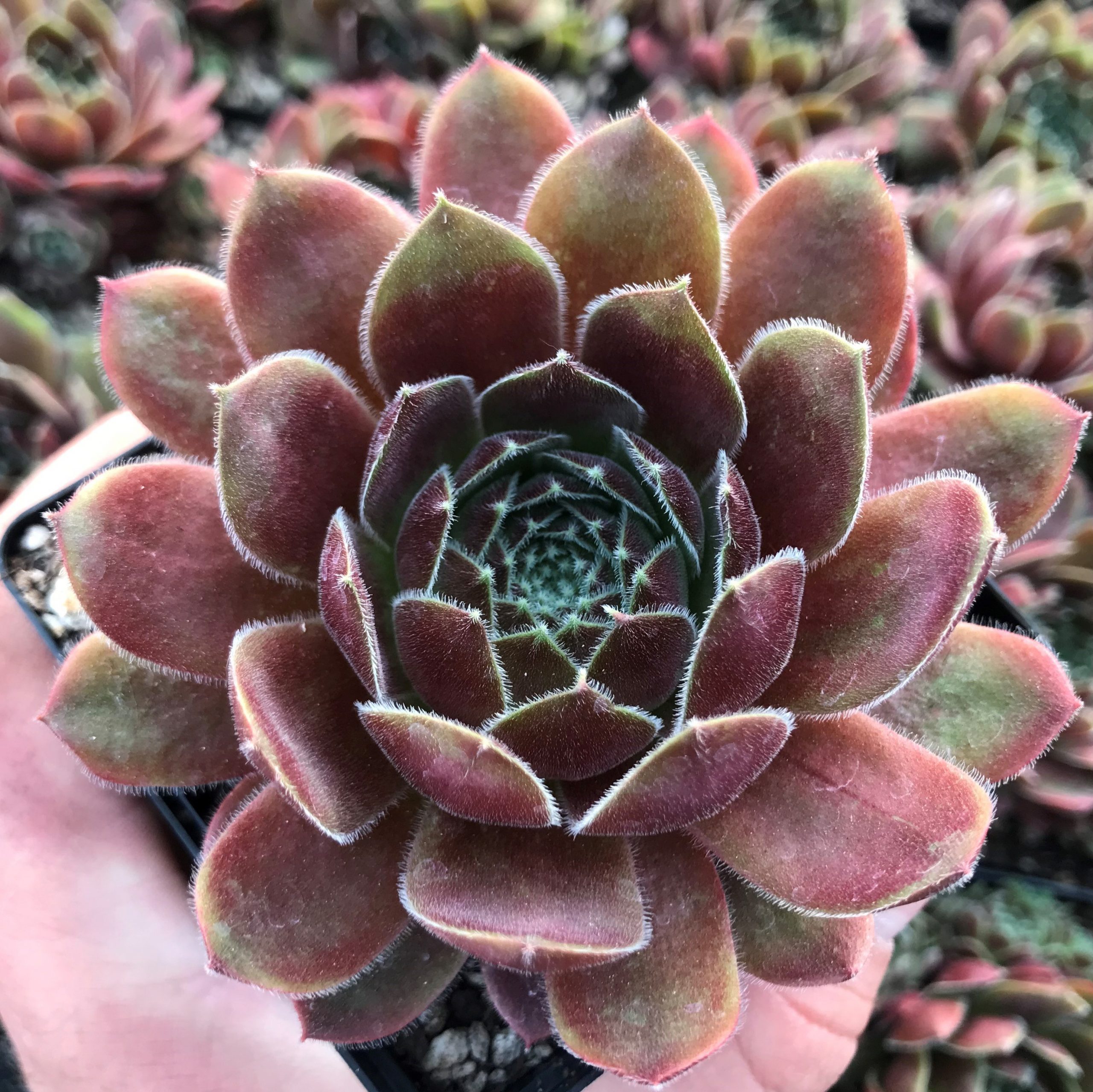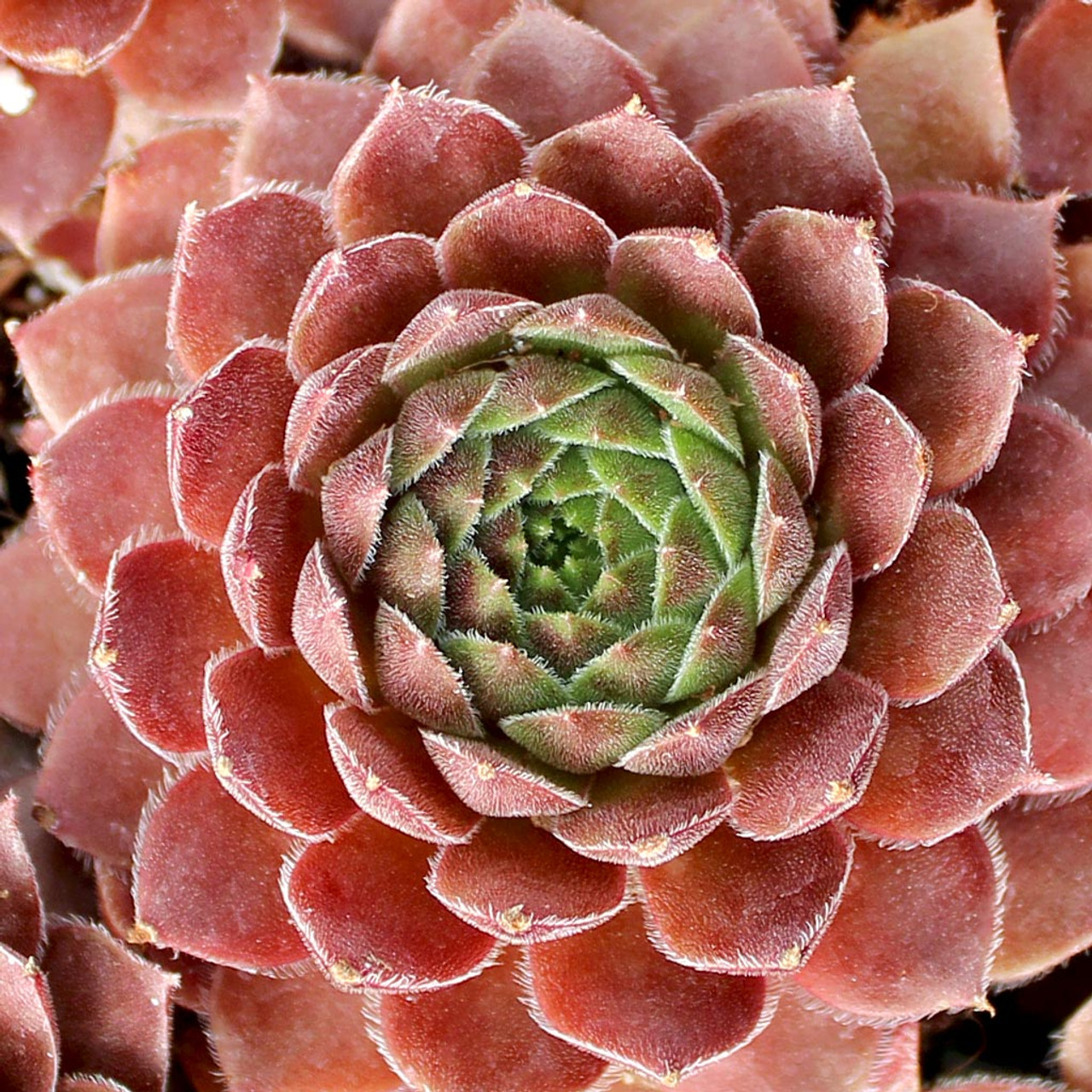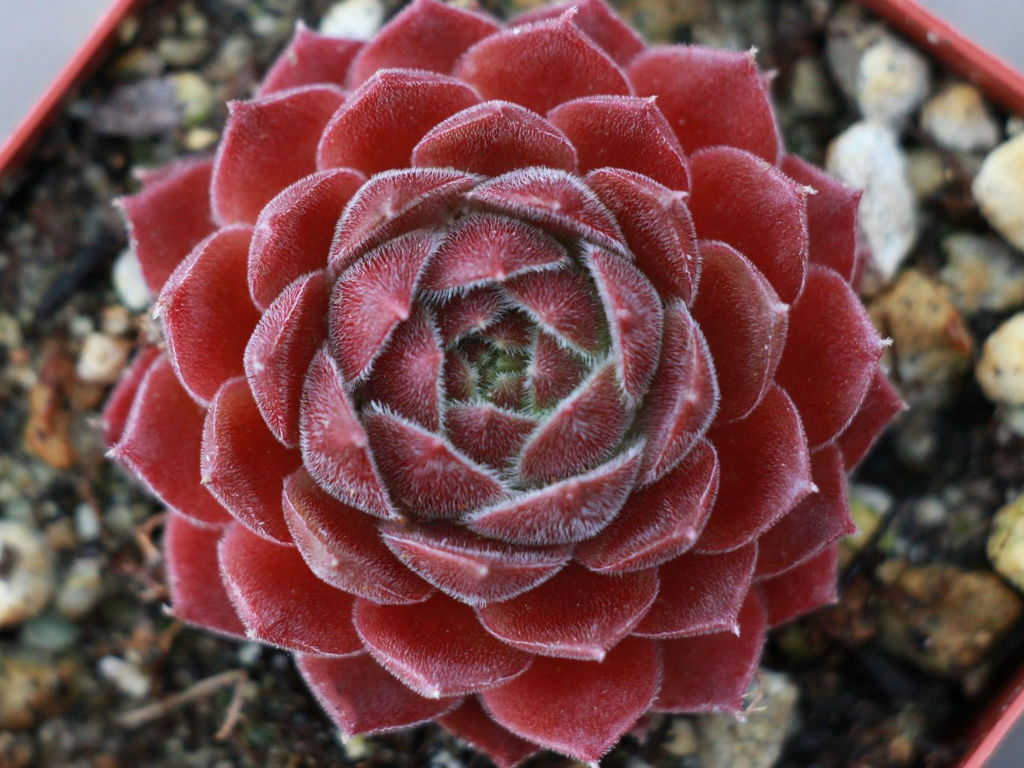This cold-tolerant succulent features striking dark green and pink rosettes. It is capable of propagating itself by sending out offsets, creating a lush and vibrant ground cover. It is also deer resistant and offers a splash of color in your winter garden.
Table of Contents
Care and Propagation Information
Sempervivum ‘Dea’ provides a vivid splash of color in even the most frigid of gardens, able to remain vibrant even beneath a layer of snow during the winter. It can also be used to great effect on green roofs.
Watering
Sempervivum ‘Dea’ should be watered using the “soak and dry” technique, which involves allowing the soil to dry out completely between waterings. This is the most suitable approach for meeting the typical water requirements of this type of succulent.
Where to Plant
Dea is capable of surviving in temperatures as low as -20°F (-28.9°C) and is able to thrive in bright sunny areas, as well as in places with partial sun.
How to Propagate Sempervivum ‘Dea’
Sempervivum ‘Dea’ can be easily propagated through its offsets. The mother plant will produce a large amount of these “chicks” which can be removed, potted, or added to a flower arrangement.
Offsets
Dea can be propagated by cutting away small rosette offsets from the stem with a clean and sharp knife or scissors. To ensure successful growth, allow the offsets to sit in a dry environment for 1-2 days before positioning them in soil that drains well.
Practical uses
Care and Propagation Information
General Care for Sempervivum ‘Dea’
Sempervivum ‘Dea’ provides a vivid splash of color in even the most frigid of gardens, able to remain vibrant even beneath a layer of snow during the winter. It can also be used to great effect on green roofs.
Watering
Sempervivum ‘Dea’ should be watered using the “soak and dry” technique, which involves allowing the soil to dry out completely between waterings. This is the most suitable approach for meeting the typical water requirements of this type of succulent.
Where to Plant
Dea is capable of surviving in temperatures as low as -20°F (-28.9°C) and is able to thrive in bright sunny areas, as well as in places with partial sun.
How to Propagate Sempervivum ‘Dea’
Sempervivum ‘Dea’ can be easily propagated through its offsets. The mother plant will produce a large amount of these “chicks” which can be removed, potted, or added to a flower arrangement.
Offsets
Dea can be propagated by cutting away small rosette offsets from the stem with a clean and sharp knife or scissors. To ensure successful growth, allow the offsets to sit in a dry environment for 1-2 days before positioning them in soil that drains well.
Practical uses
Sempervivum arachnoideum ‘Dea’ is an excellent choice for a “living roof” due to its succulent properties.
FAQ
Is Sempervivum invasive?
It has a tendency to cling to roofs, walls, and other structures, which is where its name is derived from as tectorum means “of house roofs” in Latin.
How much sun does a Sempervivum need?
Many types of plants require at least three to four hours of sunlight each day to grow and thrive, while some can survive in complete darkness.
Can Sempervivum take direct sunlight?
Sempervivum needs at least 6 hours of direct sunlight every day to show its brightest colors. If your area has hot, dry weather, providing some afternoon shade may be beneficial to keep the leaves from being damaged. The plant can still thrive in partial sun.
How do Sempervivum spread?
Allow your mother “hen” Sempervivum to reproduce and spread its offspring around your garden. The small offspring will find places to settle, such as the cracks and gaps between stones, but they will also be content to grow in any available space.
Does Sempervivum like sun or shade?
Reworded: direct sunlight



